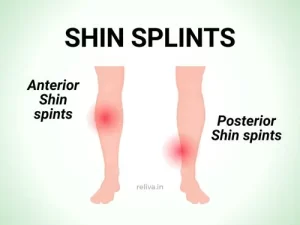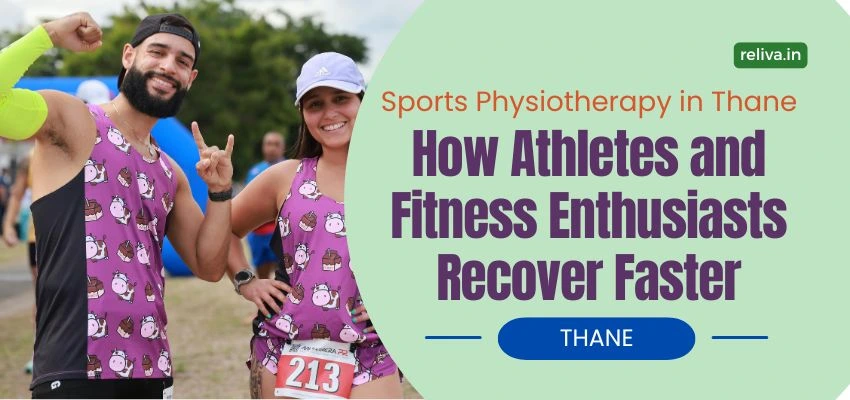Shin splints or medial tibial stress syndrome (MTSS) is fairly common among those who pursue activities like running, dancing or aerobics. It appears as a strong pain and/or swelling in the lower legs after a strenuous activity. Shin splint pain concentrates in the lower leg between the knee and ankle. They are a common sports injury affecting athletes who engage in running sports or other forms of physical activity, including running and jumping.

What does it feel like when you have shin splints?
Shin splints is the name for pain in the shins, usually caused by exercise. Usually, one will experience some of the following symptoms:
- a dull pain in the front part of the lower leg
- pain that develops during or after exercise
- pain along the inner part of the lower leg
- tenderness or soreness along the inner part of the lower leg
- numbness and weakness in the feet
- mild swelling in the lower leg (sometimes)
Tibia, popularly known as shin bone is the larger and stronger of the two bones in the leg below the knee, and it connects the knee with the ankle bones.
What’s the cause of shin splints? Why do I keep getting them?
If you have got shin splints, chances are that you are doing any of the following activities:
- Running on hard surfaces like concrete
- Running on uneven ground
- Beginning an exercise program after a long gap
- Increasing exercise intensity or duration, too soon
- Running in worn-out or ill-fitting shoes
Running or repetitive weight bearing on the legs may lead to tension on the muscles around the shin bone. This causes swelling (inflammation) of the tissue around the bone, which causes pain.
Interestingly a study reveals that shin splint was found more in females (55.3%)than in males (44.7%).
Shin splints is a cumulative stress disorder. Repeated pounding and stress on the bones, muscles, and joints of the lower legs prevents your body from being able to naturally repair and restore itself.
If you are taking appropriates measures (as suggested later in the post) and still getting pain repetitively, it could be due to a strain or sprain. It is best to see a physiotherapist to identify the cause of your pain.
Related Reading :
Ankle Sprain : Sprain Causes, Symptoms & Treatment
7 Common Gym Injuries And How To Prevent Them
7 Common Dance Injuries And How To Prevent Them
What to do to treat Shin Splints at home?
You could do the following to recover from Shin Splints at home:
- The treatment of shin splints begins with Rest, Ice, Compression, and Elevation (RICE). All of these should help to decrease the involved inflammation and pain. [Click here to understand how to follow RICE protocol]
- Once the pain has subsided, exercise can be resumed, but it must be built up gradually to prevent a recurrence. If the pain still resumes, it is best to stop the activity immediately.
- Take a break from the activity causing you the pain, switch to some other form of physical activity like swimming etc.
- In the meanwhile, consult a physiotherapist who will help you to strengthen your shins and ease you back to your activities.
How will Physiotherapy treatment work for shin splints?
Fortunately, treatment for shin splits is relatively straight forward and prognosis is excellent. This is how Physiotherapy treatment for shin splints will progress:
- Your physiotherapist will assess the severity of the injury.
- They will focus on reducing pain and inflammation to begin with.
- The therapist will also help determine the cause of the shin splints (for example, improper biomechanics, overuse, or other) so an appropriate treatment plan can be developed.
- Typical treatment includes muscle strengthening, stretching, heat/ice and biomechanical corrections.
At ReLiva Physiotherapy & Rehab, majority of patients are well on the road to recovery after 4-6 weeks or so. Have shin pain that’s not going away? book a physio consultation now by clicking here.
Can you still run / walk with shin splints?
If you continue to run on pain, especially when it hurts in a very specific area, it may develop into a stress fracture, tibial stress fracture specifically in case of shin splints – which will require up to six weeks of no running.
“You would rather rest and recover than risk a long break.“
How long does it take to heal / recover from shin splints?
Shin splints normally require that you take a break from certain physical activities and give your legs time to rest. The discomfort will usually resolve completely with rest and limited activity.
Expect that you need at least 2 weeks of complete break from your sport or exercise.
Until then, take the following precautions to recover and prevent further shin pain:
- Avoid repetitive exercise of your lower leg for 1 to 2 weeks. Keep your activity to just the walking that you do during your regular day.
- Try other low impact activities as long as you do not have pain, such as swimming or biking.
- After 2 to 4 weeks,
- If the pain is gone, you can start your usual activities. Increase your activity level slowly.
- If the pain returns, stop exercising right away and see a physiotherapist. [Scroll up to see how a physiotherapist can help you heal from shin splints]
Know that shin splints can take 3 to 6 months to heal. DO NOT rush back into your sport or exercise. You could injure yourself again.
How to prevent shin splints?
Steps you can take to avoid getting shin splints include:
- Check the condition of your shoes. If they look worn out, or don’t give you the support they once did, get a new pair.
- Strengthen calf muscles of your legs.
- Introduce any changes to your activity level gradually.
- Mix high-impact exercises like running with low-impact exercises like swimming.
- Warm up before exercise and stretch after a strenuous activity. This will also help you feel less sore the next day.
- Do not attempt to exercise through the pain
Any intensive exercise program requires strengthening of all surrounding muscle groups. Workouts should be varied to avoid overuse and trauma to any particular muscle group. Injuries like Tennis Elbow and Shin splints occur often due to overuse and repetitive movements.
How do you strengthen your shin muscles?
Doing simple exercises such as heel raises or toe raises can help strengthen your calf and shin muscles, to help prevent shin pain. In case you continue to face the issue repetitively, check with a physiotherapist who will identify the cause of the pain and resolve it accordingly.
In general, precautions such as stretching, warming up and cooling down, using proper technique and getting plenty of rest will always help prevent most of the sports injuries.
If you found this article helpful, do share with others who share your area of interest. Click below and subscribe to our newsletter to receive regular updates on the latest in the field of Movement and Recovery.
These guidelines should not take the place of medical advice if attempting to return to sports following an injury. If an athlete requires assistance during or in the progression of a return to sport program they should consult with their medical expert, or physiotherapist.
This article is based on the contributions from Dr Pooja Sapte (PT) and Dr Shraddha Gangan (PT).
Dr Pooja S. is an MPT- Sports and Musculoskeletal and helps patients across ages to heal and recover from injuries and post operatively.
Dr Shraddha G. is an MPT- Musculoskeletal Physiotherapy, committed to her profession and finds happiness in her patient recoveries across a spectrum of sports injury, musculoskeletal and post operative cases.
Have Shin Pain? Suspecting Shin splints?
Go for Consultation





